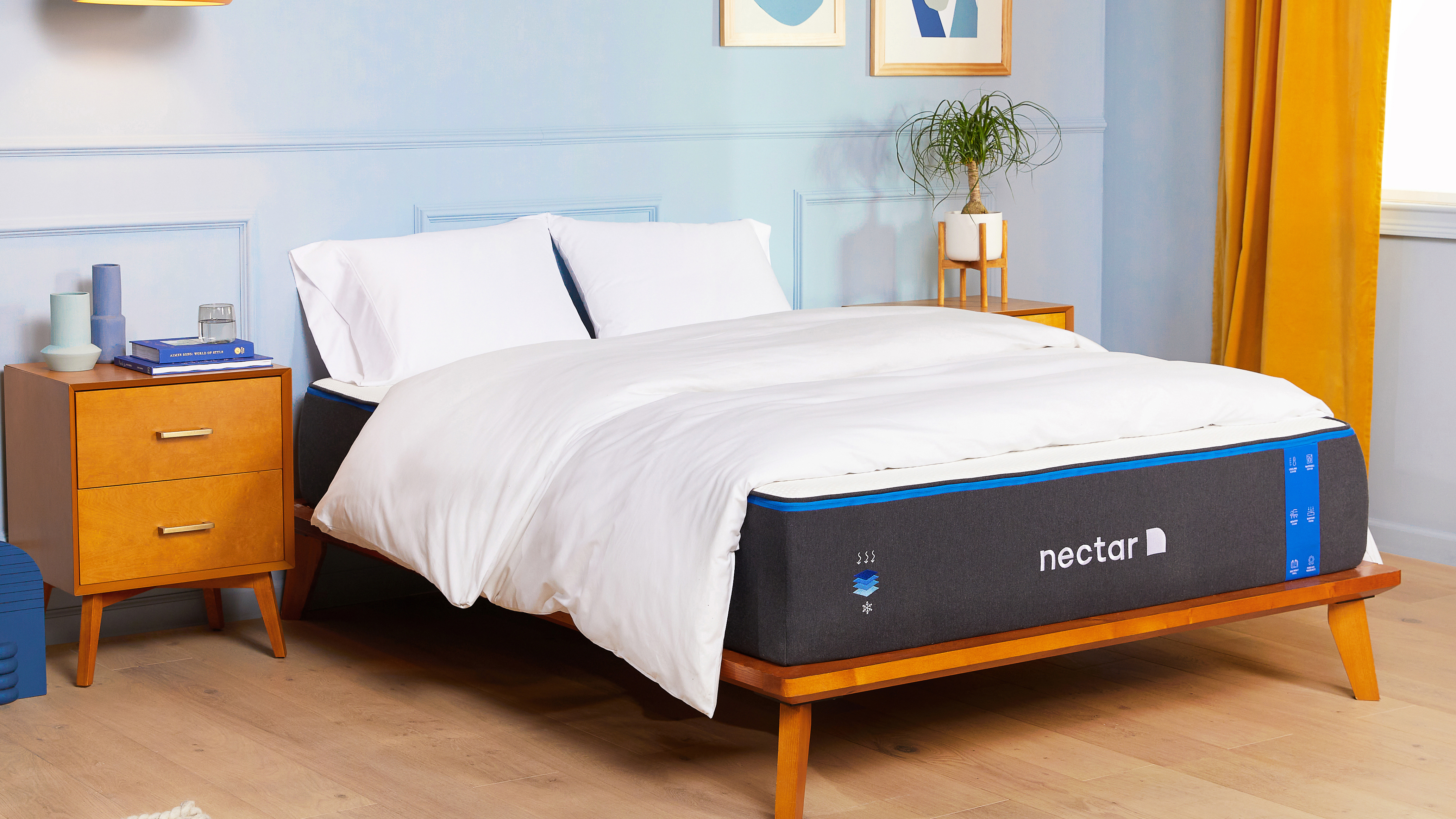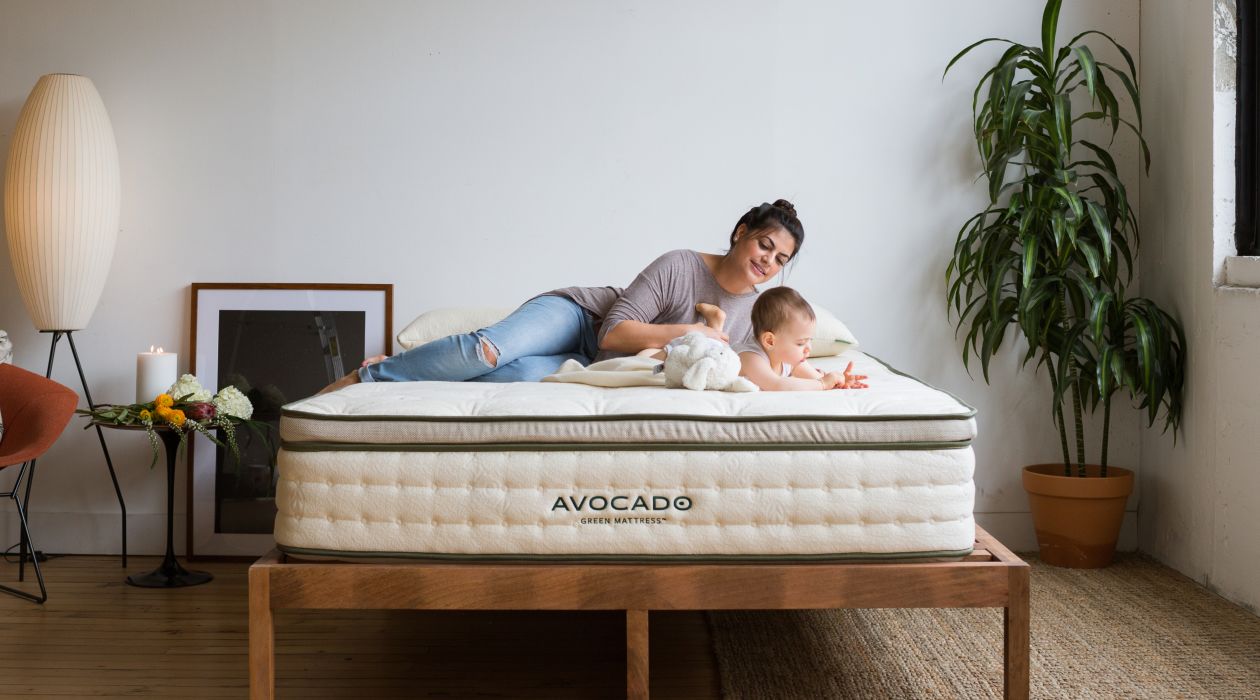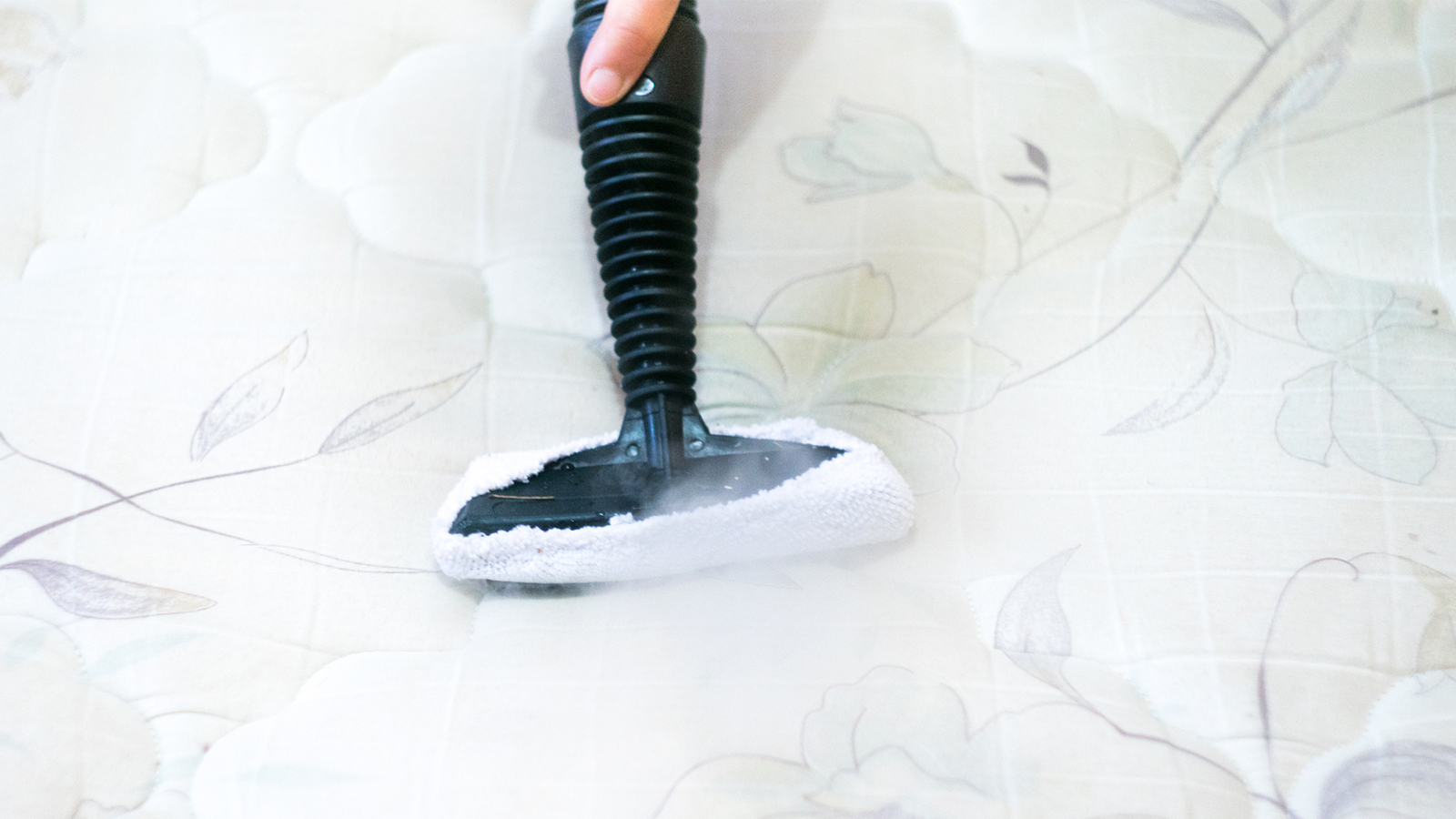How long does a mattress last: we crunch the numbers on foam, latex and hybrids
Wondering how long a mattress should last? We have answers based on the different types available

When answering ‘how long does a mattress last’, we need to take into account the type of mattress you own or are thinking of buying and what it’s made of. The best mattresses for sleeping usually come in memory foam, hybrid, latex or innerspring designs. Some of those materials are more durable than others, which means your mattress will last longer. Either way, the good news is that there’s plenty you can do to extend the lifespan of your mattress.
Here we look at how long a mattress should last, including from brands such as Tempur-Pedic, Purple and Saatva. We’ll also look at the different types and how to keep your existing mattress supporting you properly for years to come. As we explain in our feature on how mattress warranties work, a warranty of at least ten years is a good indicator that it has been built to a high standard.
If you’re unsure how often you should replace your mattress, every eight years is a rough average, but this depends on various factors. We’ll also point out some common signs that it’s time to upgrade your bed. To gain extra snooze power, also take a look at our guide to the best pillow for comfier sleep. For now, here’s what we know about how long a mattress should last if you’ve picked a good one.
How long does a mattresses last: by brand
How long should a mattress last depends on many things, including how well you look after it from Day One. Most brands are unable to provide you with a definitive number of years, so we’re mostly dealing with average lifespans here.
Remember: the better the quality, the longer the mattress will last. If, for instance, you were wondering ‘How long does a Tempur-Pedic mattress last?’, you can expect to sleep soundly on one of these luxury beds for around ten years, while the brand’s more affordable mattresses might last around eight years. If you snag one using a great Tempur-Pedic mattress sale offer, they’re even better value for money in the long-term.
Different brands offer different guarantees when asked how long does a mattress last, so below we’ve included rough lifespans based on general guidelines stated on each brand’s website. Here’s how long, on average, you can expect mattresses from the following brands to last:
| Tempur-Pedic mattress | 10 years | Row 0 - Cell 2 | Row 0 - Cell 3 |
| Nectar mattress | 7-10 years | Row 1 - Cell 2 | Row 1 - Cell 3 |
| Leesa mattress | 7-10 years | Row 2 - Cell 2 | Row 2 - Cell 3 |
| DreamCloud mattress | 7-10 years | Row 3 - Cell 2 | Row 3 - Cell 3 |
| Sealy mattress | 8-10 years | Row 4 - Cell 2 | Row 4 - Cell 3 |
| Helix mattress | 7-15 years | Row 5 - Cell 2 | Row 5 - Cell 3 |
| Purple mattress | 10 years | Row 6 - Cell 2 | Row 6 - Cell 3 |
| Casper mattress | 10 years | Row 7 - Cell 2 | Row 7 - Cell 3 |
| Sleep Number | 15 years | Row 8 - Cell 2 | Row 8 - Cell 3 |
| Beautyrest mattress | 7-10 years | Row 9 - Cell 2 | Row 9 - Cell 3 |
| Serta mattress | 8-10 years | Row 10 - Cell 2 | Row 10 - Cell 3 |
| Simba mattress | 10 years | Row 11 - Cell 2 | Row 11 - Cell 3 |
| Dormeo mattress | 10 years | Row 12 - Cell 2 | Row 12 - Cell 3 |
These are not definite lifespans and how well you care for your mattress, and the type of bed or base you use it on, will impact how long it lasts. We’d recommend using these as rough approximations, rather than taking them as gospel. But it should be clear from a quick glance that all of the brands listed above make mattresses that should last you at least seven years, if not much longer. That, coupled with long warranties, is the hallmark of a quality bed.

How long do memory foam mattresses last?
The best memory foam mattresses tend to last a little longer than other types. That’s because foam is generally more durable, and with all-foam mattresses, there are fewer components to deteriorate quicker and compromise the overall quality. Rotating and regularly airing or cleaning it, and using a suitable bed frame should mean you can get approximately 10 years’ use from it.
For our top all-foam pick, read our Nectar Memory Foam Mattress review guide, and use our round-up of the best Nectar mattress sales and deals for the cheapest prices.
You’ll know it’s time to upgrade if you are no longer getting proper pressure relief and instead wake up with aches and pains. The foam may also become softer and start to yellow over time (see our feature on why is my mattress yellow?). 10 years is a great lifespan for a mattress, so if you still feel that your foamie is serving you well but could do with a little boost in terms of comfort or firmness, consider using a good mattress topper to breathe new life into your bed.
How long do hybrid mattresses last?
Hybrid mattresses are often more expensive than all-foam beds, but how long does a hybrid mattress last? As long as you take care of it, a good hybrid – many of which can be found in our best mattress in a box guide – will last you several years. The length of the warranty is a good indicator of how long the manufacturer expects it to last.
Depending on the quality of the layers used in the hybrid, as well as how durable the main core is, some hybrids may last seven years. But top sleep brands such as Purple and Casper say their hybrids can last up to 10 years because they are made using high-quality materials and cutting-edge sleep technologies.
Because hybrid mattresses are made up of multiple layers, usually with a sturdy base and a softer top, they should not be flipped as this could damage the mattress and void the warranty. You should, however, be able to rotate most mattresses. For more information on this, read our feature on how often should you rotate your mattress?

How long do latex mattresses last?
Because of the naturally durable and resilient nature of latex, these mattresses are often the most long-lasting. 100% natural latex (look for the terms 'organic' or 'all-natural' when choosing) can last anywhere from 15 to 25 years, making a natural latex mattress great value for money in the long run. There is a slight difference between Dunlop and Talalay latex – the latter tends to be softer and less dense, which makes it the less durable of the two types, although both are impressively long-lasting compared to alternatives.
However, if the latex is blended or completely synthetic, then the lifespan starts to reduce and you’re looking at nearer to 10 or fewer years. Another reason to avoid synthetic latex is that it can produce off-gassing (where toxic chemicals are released), and it softens a lot more than natural latex, meaning by the end of its 5-10 years, it will not be supporting you well. Read our what is mattress off-gassing feature for more guidance.
For an excellent 100% natural latex mattress, look at Avocado or Birch, both of which come with a 25-year warranty. Our round-up of the best Avocado mattress sales and deals has the latest discounts.
How long do innerspring mattresses last?
Because of the nature of springs and their tendency to wear down and cause sagging in the mattress (a no-no for back health), spring mattresses generally have a lifespan of about 5-7 years.
Innerspring mattresses tend to be popular because they’re often cheaper than other types, but it’s worth thinking about how long you intend to keep the mattress and whether it’s a false economy to buy cheap. There’s also the hassle of having to get rid of it after a shorter time too (learn how to dispose of a mattress responsibly). However, if you want a cheaper mattress for your guest room, then an innerspring model is a good choice.
If you like the bounce of a spring mattress but want something that’s guaranteed to last longer, take a look at our Saatva Classic mattress review. This affordable luxury model has a sturdy coil foundation, plus another layer of body-responsive recycled-steel coils. Saatva offers a 15-year warranty with this mattress, such is the faith in its product, and it’s regularly $200 off as part of the ongoing Saatva mattress sales.
How to help your mattress last longer

When you buy a new mattress – no matter what type – there’s plenty you can do to make it last longer, including:
- Rotating the mattress to keep the surface even and supporting you well. Check out our guide to rotating a mattress. Some mattresses can also be flipped, but check first, as many are one-sided only.
- Cleaning and airing your mattress to keep it fresh. There are several easy ways to do this, which we cover in our feature on how to clean a mattress. You should also regularly wash your bedding to prevent sweat, dust mites and bacteria reaching your mattress. It’s also a good idea to keep pets off your mattress, especially heavier dogs, as the weight, and accidental tears from claws can quickly wear down a mattress.
- Use a protector or pad to safeguard from spills, stains, sweat and germs. These can be easily removed and washed too. See our top picks in our guides to the best mattress protectors.
- Get a sturdy foundation, such as a traditional bed frame with equally spaced slats, a box spring or a platform. Check with the mattress manufacturer’s recommendations on the best foundation to buy.
- Don’t jump on your mattress! As fun as this is, it can lead to faster wear and tear, especially on any springs.
Common signs that it needs replacing
It’s easy to forget exactly how long you’ve owned a mattress. But, as a general rule, after about seven or so years your mattress might start to show signs of normal wear and tear, including dips, scuffs and yellowing.
If it is still keeping you healthy and sleeping well, then it may have more time left. But if the following are true, then consider replacing it soon:
- You have more aches and pains, including back pain, and frequently wake throughout the night
- The mattress is turning yellow due to ageing
- It has tears and worn patches on it
- It feels stifling to sleep on (pick a cooler model when you next buy)
- You sleep better in any other bed
For more information on why the above points are a no-no when it comes to healthy sleep, read our 5 signs you need to break up with your current mattress feature. What you sleep on makes a big difference to how well you snooze, so it pays to get this right. We always recommend buying the best quality of mattress you can afford because it will last you much longer, saving you money in the long-term, and you won’t be part of the landfill problem. If you're unsure what size to buy, read our easy guide to mattress sizes and bed dimensions.
Read more:
- Save with the best cheap mattress deals on top brands
- The latest Emma mattress sales and deals for tight budgets
- Save on hybrids with the best Simba mattress sales and discounts
- Hot sleepers, see our guide to Casper mattress deals on cooling beds
- An expert guide to Black Friday mattress deals
Sign up to get the BEST of Tom's Guide direct to your inbox.
Get instant access to breaking news, the hottest reviews, great deals and helpful tips.
Grace is an experienced sleep writer and mattress reviewer who also contributes to our sister site TechRadar, among other Future plc brands. She's a big fan of organic sleep products and has recently invested in a wool mattress topper that she quite happily describes as "life-changing." (Hey, we're serious about our sleep products). When she isn't testing mattresses or writing about sleep, Grace enjoys reading and creative writing, and incorporates meditation and yoga into her wellness routine.

